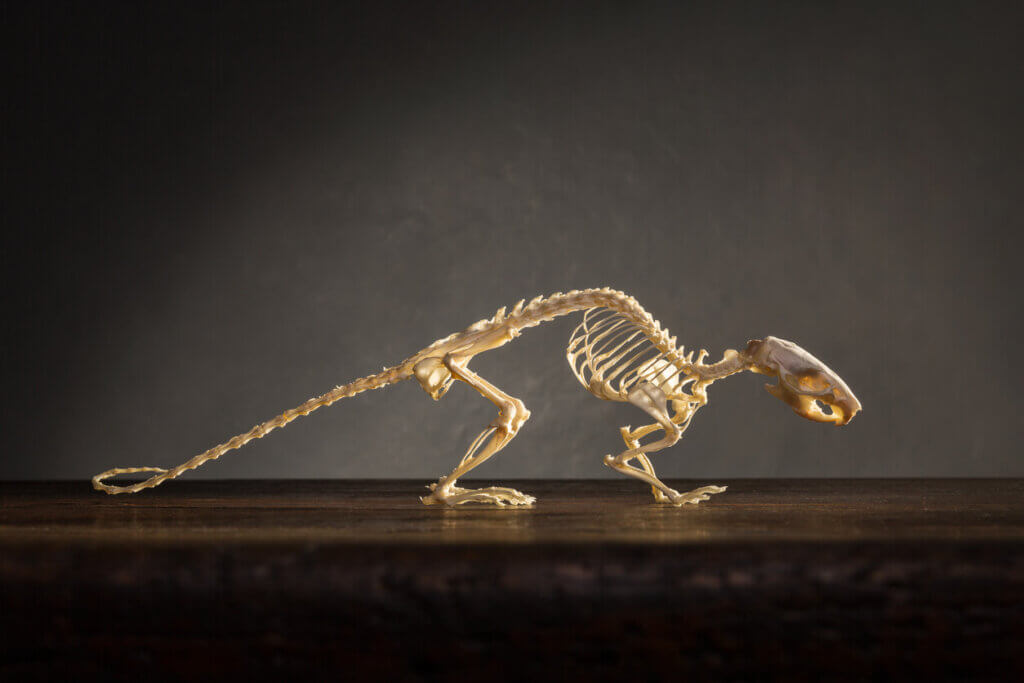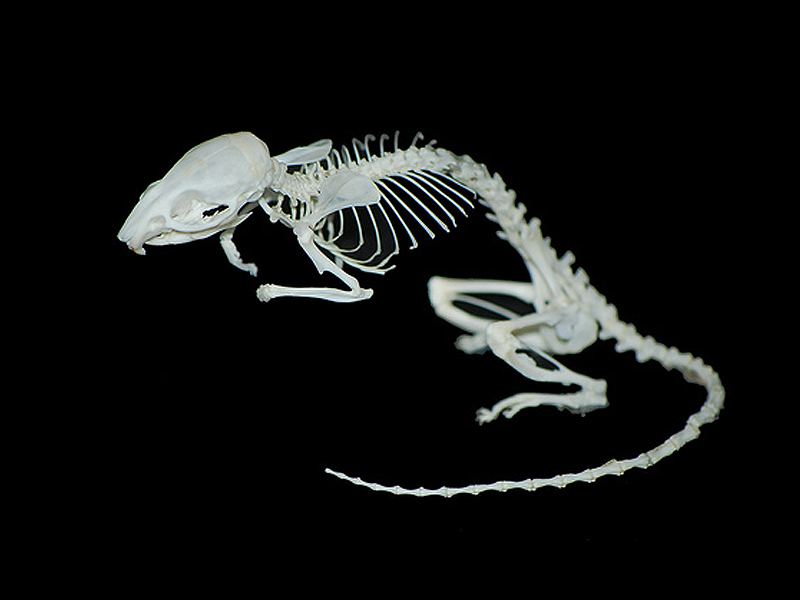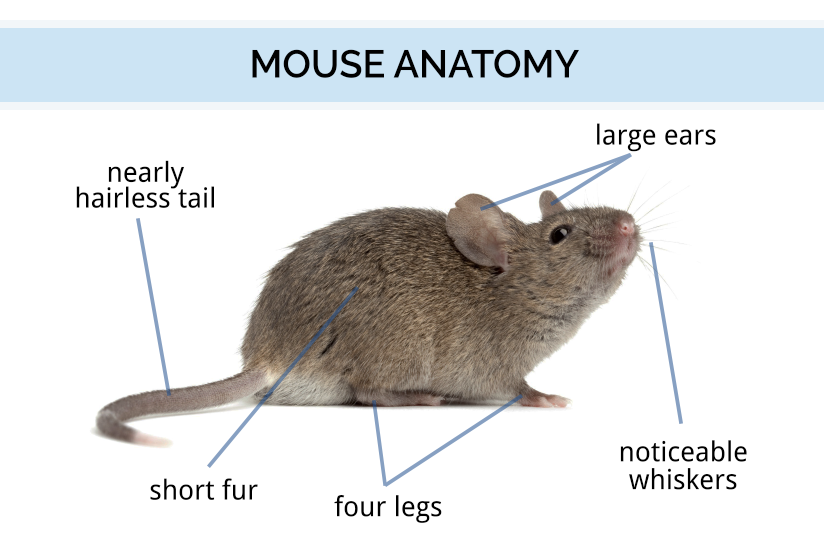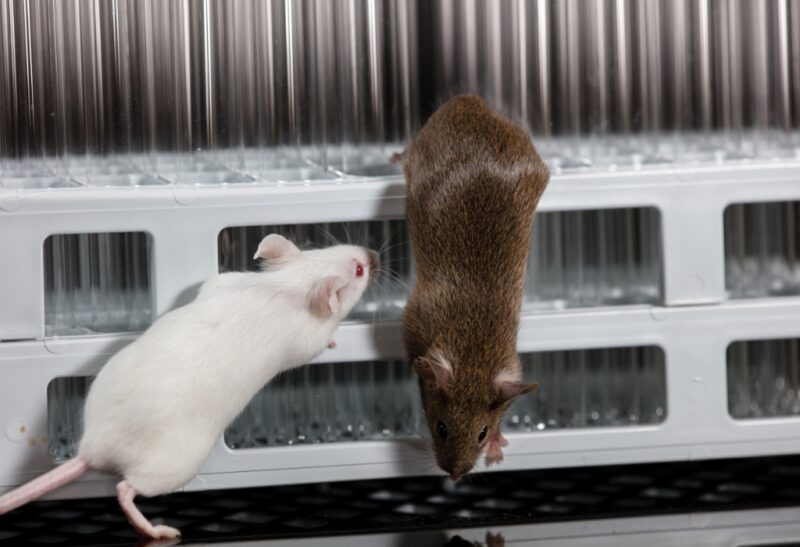
Mouse Skeleton Diagram Mouse deer, Animal skeletons, Mouse
How Do Mice Fit in Such Small Spaces? How Do Mice Fit in Such Small Spaces? If you've ever scoured the perimeter of your house for entry points an animal could enter through - and if you haven't, you really should - you may wonder just how small an opening you should be concerned about.

Do Mice Have Bones?
In fact, excluding the bones in their tails, mice exhibit a similar bone count to humans. On average, a mouse boasts between 225 and 231 bones, which surpasses the human tally of 206 bones. Over 20 of these bones, however, reside in the tail, which may account for the discrepancy. As evidenced, mice host an abundance of bones.

Do Mice Have Bones?
Do Mice Have Backbones? Mice do, in fact, have backbones. It's a common myth that they don't. What they also have are sloping, flexible collarbones, which makes it incredibly easy for them to sneak into holes the size of their heads. They also have very flexible ribs, which makes wriggling into tight places a cinch. Where Do Mice Come From?

Do Mice Have Bones?
If you're wondering, yes: mouse tails have bones, too. Mice have an intricate skeleton. However, that has led to some myths regarding their bodies. For example, one myth that has persisted for years says that mice have collapsible skeletons, especially skulls. That is not true at all.
Do Mice Have Bones? Macaroni KID Androscoggin
Military news Technologies news Mice have an amazing ability to fit in extremely tight spaces. But, contrary to what people may think, they do have bones. A mouse enters through a hole.

Do Mice Have Bones? & Other Interesting Facts about Mice
Dr. Bobby Corrigan, an award-winning rodontologist, states that a mouse will probably find its way through a hole if it's deep enough to accommodate a #8 pencil. Other pest control consultants prefer using a dime to measure this. The Anatomy of a Rat- Do mice have backbones?

A mouse has more bones than a human—225 vs. 206! Animal skeletons
A mouse is a small rodent with a pointed nose, furry round body, large ears and a long, often hairless, tail. There are hundreds of types of mice, divided into subfamilies of either Old World.

Skeleton of the mouse The world under the microscope
Domestic Animals Hamsters and Rodents Do Mice Have Bones? 5 minutes Mice have bones because they're vertebrate animals. Even so, they can squeeze through the smallest holes without much effort. Small rodents are adorable creatures, but above all, they're experts elusive.

Mouse Skeleton Lateral View Of A Mouse Skeleton. Nieuwsfoto's Getty
Skeletal Structure Just like humans and other animals, mice have a backbone. Their ribcage serves as a shield for their internal organs, and their spine comprises 32 to 34 vertebrae. Additionally, mice possess a set of teeth used for chewing and gnawing, as well as a skull that safeguards their brains. Muscles and Organs

Do Mice Have Bones?
A mouse has 225 bones, which number is more significant than a human. Their bones are connected through joints and cartilage. The myth is that mice don't have bones. The reason behind it is how they enter through small spaces if they have bones, then how it is possible through these spaces. Taxonomy: Class: Mammals Order: Rodents Family: Murids

mouse bone anatomy
Yes, a mouse is a vertebrate. Mice belong to the animal class Mammalia, and like all mammals, they have vertebrae—or bony structures—that form a spine or backbone. Do mice have a backbone? Without a doubt, mice have backbones. Their backbone consists of several small bones, known as vertebrae.

Do Mice Have Bones? Mice prevention, Mouse
How Is a Mouse Like a Giraffe? Do Mice Bite? What Do Mice Eat? How to Get Rid of Mice Naturally? Are Mice Mostly Cartilage? Do Mice Have Backbones? Mice, being vertebrates, do possess a backbone. Their spine is made up of individual vertebrae that give them flexibility and structure, just like in other mammals. Do Mice Have Collarbones?

Skeleton of the mouse The world under the microscope
In short, yes - mammals, such as mice and all rodents, have bones and a full skeletal system. So the real question becomes, how do rodents, like mice and rats, get into my home? How small of a hole can mice fit into? While rodents may seem to have Houdini like abilities, mice and rats are actually designed to squeeze into very tight spaces.

Mouse Identification & Anatomy How Long Mice Live
' Yes, they do! Mice are mammals so they have internal skeletons like we do. Their bodies have a similar number of bones to ours, but the 25 vertebrae in their tails mean they have more bones than humans overall.

Skeleton of the mouse The world under the microscope
Mice, like all mammals, have a skeletal system composed of bones. These tiny creatures have about 205 bones in their body that support and protect their organs. Their bones are proportionally smaller than those of larger animals and are made up of the same materials such as calcium, collagen, and minerals. Mice rely on their bones for structural support allowing them to move quickly through.

Do Mice Have Bones? All You Need to Know! EXOtella
Mice, like all mammals, do have a skeletal system, consisting of bones that provide support and protection for their internal organs. The mouse skeleton is composed of over 200 bones, including the skull, spine, ribs, and limbs. The bones are connected by joints and held together by ligaments and tendons, allowing for movement and flexibility.